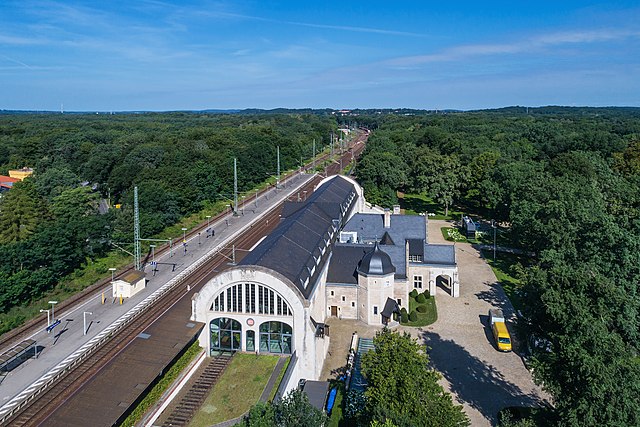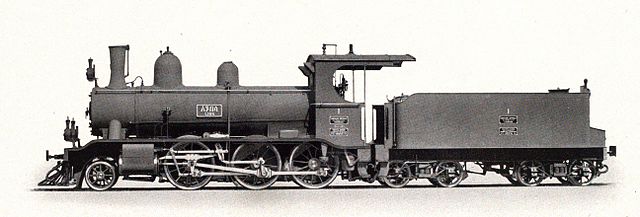A royal train is a set of railway carriages dedicated for the use of the monarch or other members of a royal family. Most monarchies with a railway system employ a set of royal carriages.
k.u.k. Hofsalonzug at Pula train station, 1899
Private railway station of Kaiser Wilhelm II. In Potsdam
Saloon No. 1 of Kaiser Wilhelm II., 1890s
Saloon of King Ludwig II of Bavaria (foreground) and terrace-car (background), second half of the 1860s; preserved in Nuremberg Transport Museum
The Ethio-Djibouti Railway is a metre gauge railway in the Horn of Africa that once connected Addis Ababa to the port city of Djibouti. The operating company was also known as the Ethio-Djibouti Railways. The railway was built in 1894–1917 to connect the Ethiopian capital city to French Somaliland. During early operations, it provided landlocked Ethiopia with its only access to the sea. After World War II, the railway progressively fell into a state of disrepair due to competition from road transport.
SLM M-series Diesel locomotive with a mixed goods/passenger train on the Holhol viaduct in 1960
SLM steam locomotive No. 1 "Lion" in 1899, the very first locomotive of the railway
Coal wagon built by Société Franco-Belge
The Addis Ababa Legehar train station.








